-

2022年江苏省扬州市中考英语真题(原卷版)
Every month, Julia and her cousins would go forthe big family meal at their grandparents’ house. On each visit, their grandpawould give them a few coins. Then all the children would run off to buy sweets.One day, he gathered the children together.
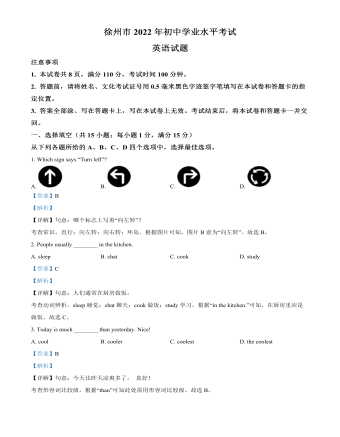
2022年江苏省徐州市中考英语真题(解析版)
Du, 23,is a student from Shanghai University. He won third place at the ninth IOIO (国际折纸奥林匹克) in February this year. A total of 803 competitors from 59countries and areas took part in this year’s event.
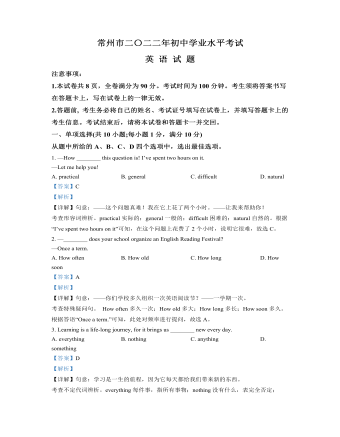
2022年江苏省常州市中考英语真题(解析版)
Russia’s skating silver medalist AlexandraTrusova, 17, amazed the world with five quadruple jumps (四周跳)during free skate at the Beijing Winter Olympics. No other woman has everfinished five quadruple jumps in an Olympic competition.
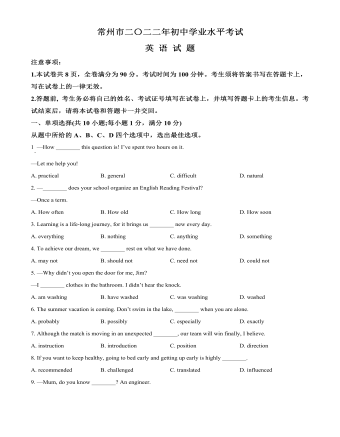
2022年江苏省常州市中考英语真题(原卷版)
At 9 a.m. , he drives to primary schools and middle schools in Xi’an, ShaanxiProvince, to teach students about Shaanxi kuaiban. It is a traditional Chineseform of storytelling to the rhythm(节奏) of bamboo clappers(响板), whichthe art form is named after. Sometimes, he helps students prepare forcompetitions. Usually, his classes run until about 6. p.m. , and then hereturns home to prepare classes for the next day.

2022年江苏省宿迁市中考英语真题 (解析版)
ThreeRiver-Source National Park on the Qinghai-TibetPlateau(青藏高原),is the largest national park in China. Because it is home to the sources of theYangtze, Yellow and Lancang rivers, people call it “China’s water tower”.
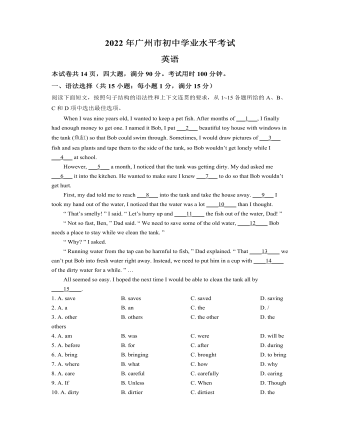
2022年广东省广州市中考英语真题(解析版)
When youand your friends turn to each other to talk about problems or troubles, yougive each other advice and help. One important thing of our growth is to makedecisions to help our friends and learn to support each other. This requires usto learn what it means to help friends and how to help them in right ways.
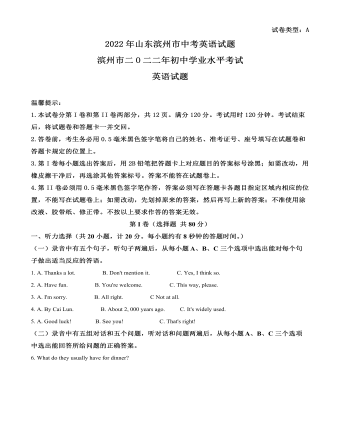
2022年山东省滨州市中考英语真题(解析版)
Everyone knows how similar chimpanzees (黑猩猩)are to humans. So it’s no surprise that their greetings are also close to ours.The most common ways of greeting between chimpanzees are hand touching andhugging. Sometimes they also kiss each other. Some chimpanzees can even learnsimple sign language.
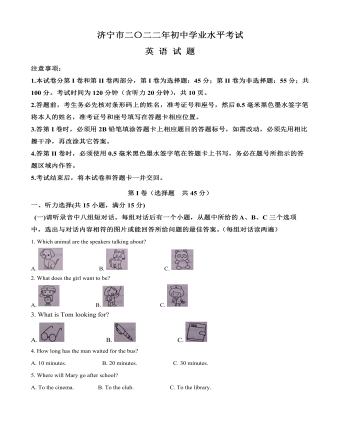
2022年山东省济宁市中考英语真题(解析版)
Raden Roro Hendarti, nearly 50 years old, is alibrarian in Muntang village. She started a “trash library”, hoping to makechildren read more as well as make them realize the importance of environmentprotection. Each weekday, Raden puts all kinds of books on the back of herthree-wheeler (三轮车)and rides to Muntang village. There, children line up to exchange plastic cups,bags and other trash for books from Raden’s mobile library. After finishing theexchange, Raden carries back all the trash.
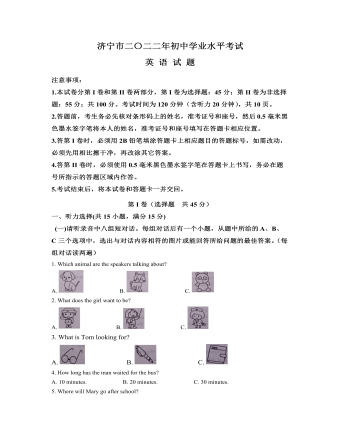
2022年山东省济宁市中考英语真题(原卷版)
Each ofthem has their own experience- two people with synesthesia may both “feel”music, but they almost never feel the music in the same way. For example, onemay feel the music of the violin lightly brushing his face; the other may feelit on her ankle (脚踝). And one’s experience of synesthesia is alwaysthe same. If they see the number 5 in the color blue, then 5 is blue every timethey see it.
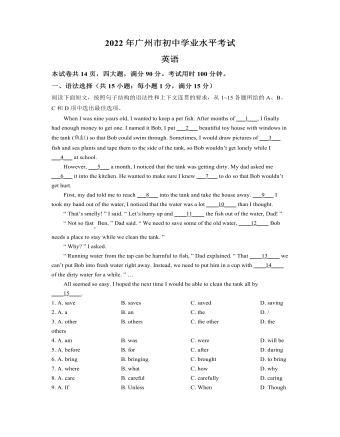
2022年广东省广州市中考英语真题(原卷版)
Slowlybut surely, Amy and her grandparents were making progress. Boxes of all sizeswere placed on top of each other throughout the house. Amy’s grandparents hadlived in the house for years and they had collected many things.
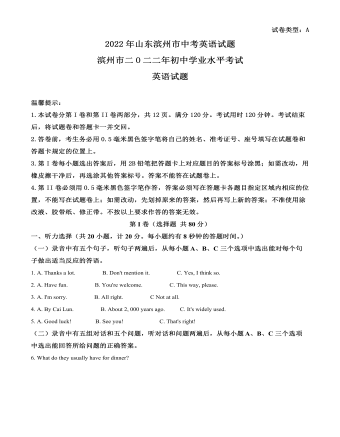
2022年山东省滨州市中考英语真题(原卷版)
As thegovernment encourages the renaissance (复兴) of traditional culture,Hanfu is getting more and more popular with the teenagers. Every year, we canenjoy different Hanfu shows around the cities. And now quite a few Hanfu clubshave been set up in universities. Members usually wear Hanfu at theirgraduation ceremonies or during holidays. Some even wear Hanfu on regular days,too. And these fans created a special day—China Haniu Day to celebratetraditional Chinese clothing. It falls on the third day of the third month inChinese lunar calendar (阴历).
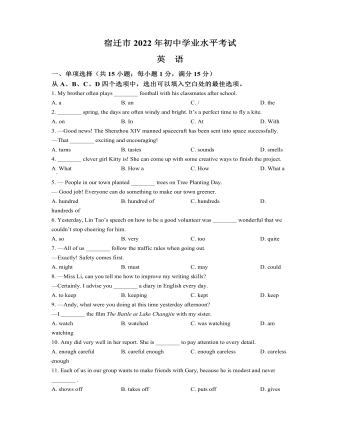
2022年江苏省宿迁市中考英语真题 (原卷版)
Theoil paper umbrella is a traditional Chinese handicraft(手工艺品).It has a history of over 1,000 years in China.In early TangDynasty, it was introduced to Japan and Korea, so it was called the “TangUmbrella”. Later oil paper umbrellas were spread to other Asian countries, suchas Vietnam, Thailand and Laos, and each had its own style. However, assteel-ribbed(钢骨的)umbrellas appeared in the last century, thehand-made oil paper umbrellas became less used in daily life. They were turnedinto decorative artifacts(装饰性工艺品).
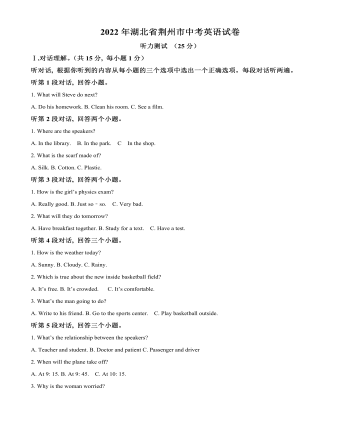
2022年湖北省荆州市中考英语真题(原卷版)
My earliest memory ofthese events began when I was around four years old. I was filled with ___12___ at that time. There were lots of ___13___ — crying, shouting, and doors slamming (砰地关上).
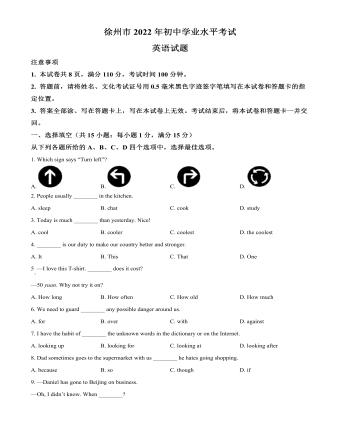
2022年江苏省徐州市中考英语真题(原卷版)
Dudiscovered his interest in folding paper in his childhood. After Du went tocollege in 2017, he had enough time to take the hobby seriously. He learnedfolding from online teachers and experts. Later he copied patterns from books.He spent almost three years improving his basic skills by making copies ofother artists’ designs. Then he made his own creations.
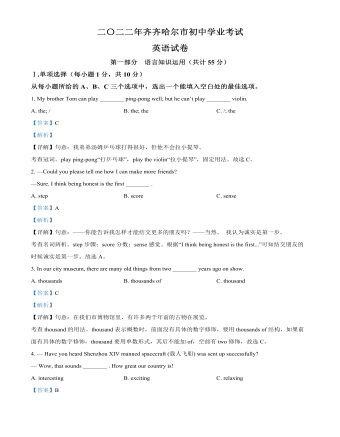
2022年黑龙江省齐齐哈尔市中考英语真题(解析版)
B: For 3 days. I expect togo there again.A: Lucky you. I had to stayat home. But I’m planning to travel to Mount Changbai.B: Oh, that’s a good place.I went there three years ago.
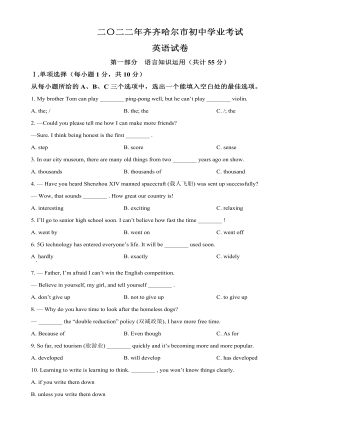
2022年黑龙江省齐齐哈尔市中考英语真题(原卷版)
(A: Sun Lan B: Li Yue C: Waiter)A: Hi! This is Sun Lan. MayI speak to Li Yue?B: Hi, Sun Lan! ________41________.Are you in Qiqihar now?A: Yes, I came back last night.
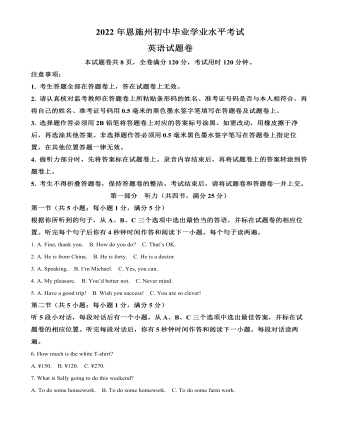
2022年湖北省恩施州中考英语真题(解析版)
Once, herfather took her to the kitchen. He asked Jane to take a potato, an egg ____11____ two spoons of tea leaves. Jane was ____12____, andasked her father, “Do you want me to cook?”
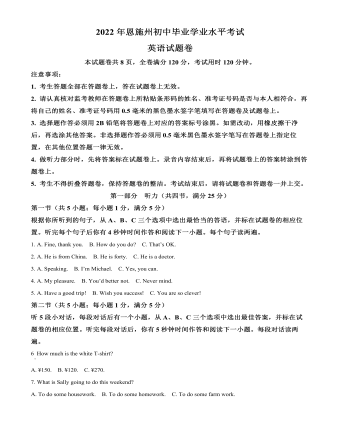
2022年湖北省恩施州中考英语真题(原卷版)
Once, herfather took her to the kitchen. He asked Jane to take a potato, an egg ____11____two spoons of tea leaves. Jane was ____12____, and asked her father, “Doyou want me to cook?”
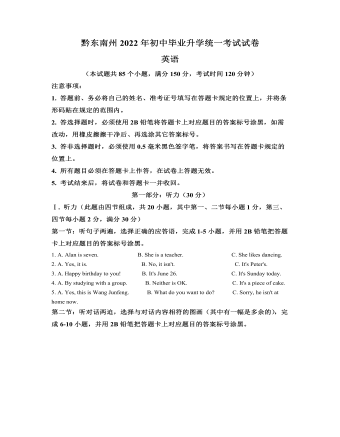
2022年贵州省黔东南州中考英语真题(解析版)
Electric cars may seem like a recent invention,but they have been around for years. In the early 1900s, there were ___16___ electric cars on the road than gasoline(汽油)cars,because at that time, gasoline was expensive compared with other fuels(燃料)
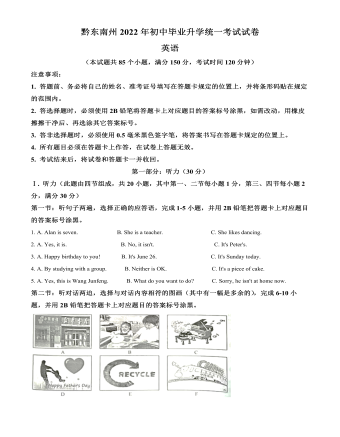
2022年贵州省黔东南州中考英语真题(原卷版)
Electric cars may seem like a recent invention,but they have been around for years. In the early 1900s, there were ___16___electric cars on the road than gasoline(汽油)cars, because at that time,gasoline was expensive compared with other fuels(燃料), electriccars were more popular.